By Penny Pawl, UC Master Gardener of Napa County
In the first old house my husband and I lived in in downtown Napa, we had the second floor and access to the attic. When we moved in, we had no idea there were bats in the attic. My first encounter was when I went to mop the floor and there was a funny looking “mouse” in the bucket.
I had just seen a Dracula movie and you can guess what I was thinking. After six years of living with bats and having no insects biting us, we had adjusted well to our fellow tenants. The only downside was cleaning up their guano.
When I visited Morocco a few years ago and camped in the desert, bats started flying around our tent during dinner. They were after the bugs flying around the light; they did not bother the other diners or me. After everyone finished eating, I stayed and watched the bats and tried to get a picture of them. Photographing a flying bat is not easy.
On a trip to Bangkok, I saw beautiful fox-faced bats hanging from the trees that we walked under.
I know we have bats right here in Napa County. I have seen them, and according to what I have read about them, we should be happy they are here. One bat can eat as many as 3,000 insects in one night.
Bats are mammals that give birth to live young. How they do that when hanging upside down is quite a feat.
There are 27 species of bats in California and 7 species in Napa County. Worldwide, there are 1,200 species, including the vampire bats of South America and the fruit-eating bats of Asia. Most of the California species nest in trees, while others nest in caves or rock outcroppings. We don't see them unless we are out at night when they are hunting for insects.
A few bats are also important pollinators. On the East Coast, white-nose syndrome, caused by a fungus, is killing many bats that nest in humid caves. In California we do not have this problem; however, many California bats are killed annually by large wind turbines.
Vineyard owners in California welcome bats because they eat insects that harm grapevines. Several organizations are dedicated to saving bats and educating the public about them.
Bats are said to seek houses or other enclosed spaces when they are reproducing and caring for their young. A few years ago, I purchased a bat house, painted it and hung it as directed on the sunrise-facing side of a tree. Droppings at the base of the tree would indicate that they were resident, but so far, I have not found evidence that they ever moved in.
Some sources advise putting bat houses under a roof overhang, but I have had enough bat guano in my life and decided not to do that. Another option is to hang the house from a pole at least 15 feet above ground. You can find a lot of information online about how to build and erect a bat house.
Some people believe that bats are blind, but this is an old wives' tale. They use both their eyes and ears and have better vision than we do. They are not related to mice. The average lifespan in the wild is 20 years, although one bat was known to live 40 years. They typically produce one bat baby, or pup, each year.
If you see a bat on a bush, on the ground or under bark on a tree, don't pick it up. Bats can carry rabies. A group of rabid bats was recently found on the UC Davis campus. Although fewer than one percent of bats are rabid, you should avoid them just in case. If you are bitten by a bat or get bat saliva on you, see a doctor at once.
Here is some information from UC IPM Pest Notes on bats:
http://ipm.ucanr.edu/PMG/PESTNOTES/pn74150.html
Workshop: UC Master Gardeners of Napa County will conduct a demonstration workshop on “Harvesting Your Compost from a Backyard Pile or Worm Bin” on Wednesday, May 26, from 6 pm to 8 pm, via Zoom. Register to get the zoom link at: City of Napa Compost Workshops
Got Garden Questions? Contact our Help Desk. The team is working remotely so please submit your questions through our diagnosis form, sending any photos to mastergardeners@countyofnapa.org or leave a detailed message at 707- 253-4143. A Master Gardener will get back to you by phone or email.
For more information visit http://napamg.ucanr.edu or find us on Facebook or Instagram, UC Master Gardeners of Napa County.
Attached Images:
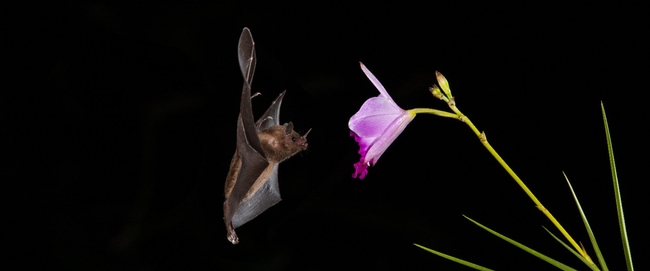
Bat (uc.edu)
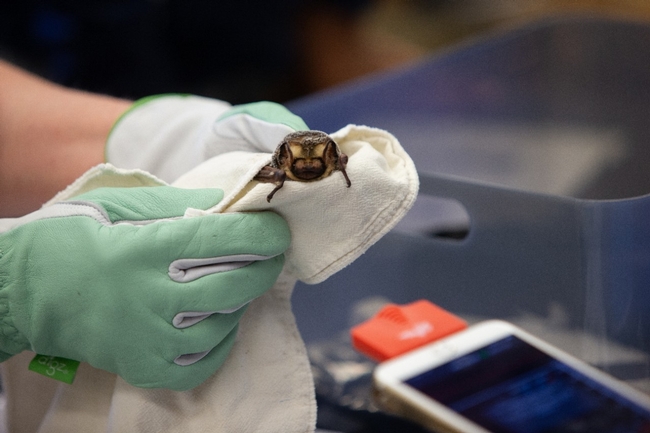
Size of a common bat, in the hands of a professional. (uc.edu)
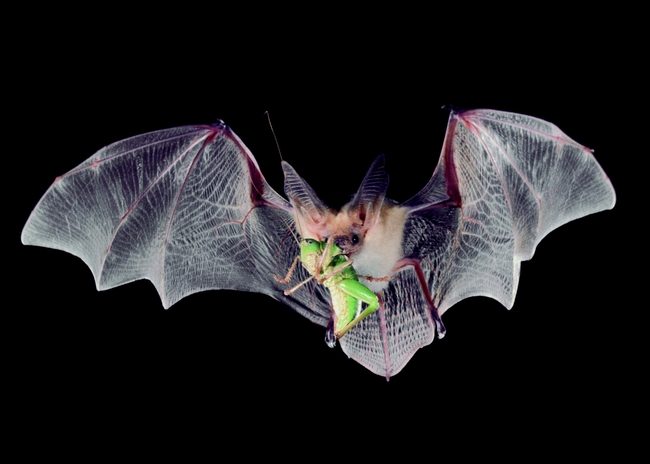
Bats eat tasty grasshoppers (ucanr.edu)
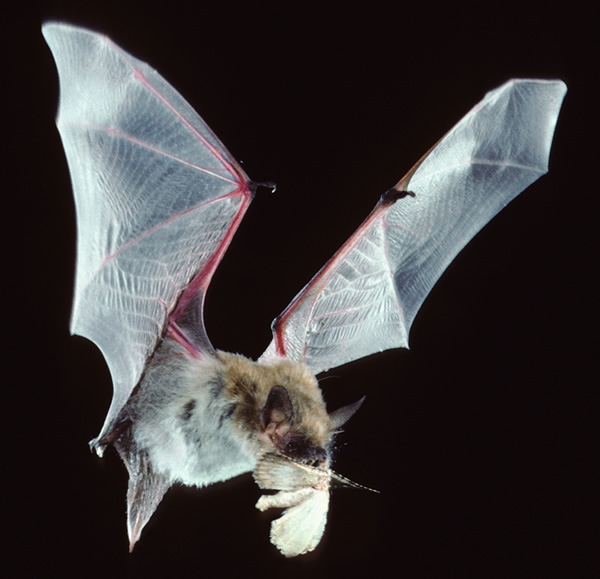
And moths. (ucanr.edu)
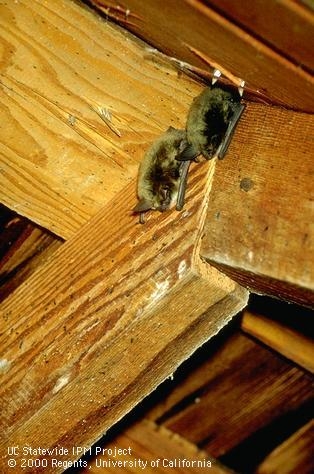
Bats hang upside down on beams, on outdoor umbrellas, on the side of the house. (ucipm.edu)
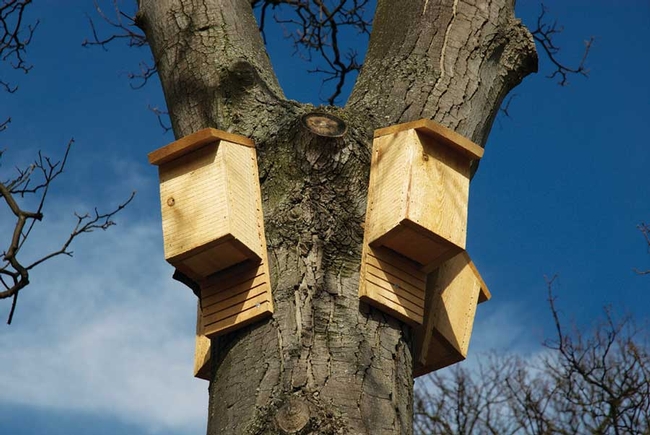
Bat houses (mountaintrue.org)
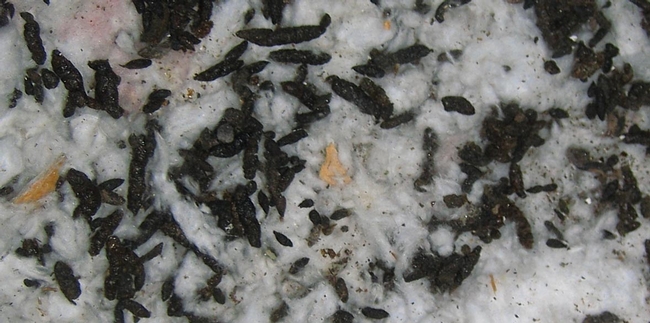
Bat guano looks like mice droppings clustered together (wildliferemovalusa.com(
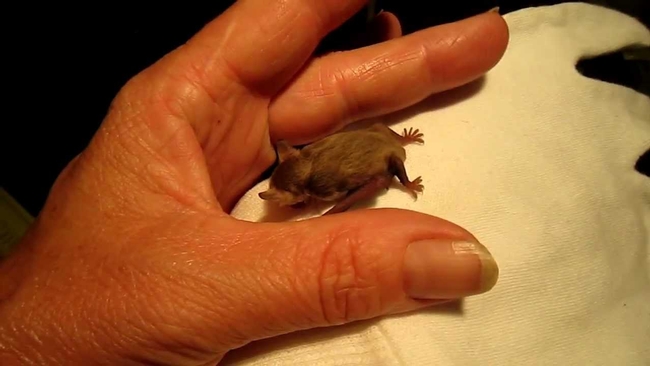
Bat pup, also in the hands of a professional. (youtube.com)

Bats at dusk getting ready to forage for insects. (inspirationfeed.com)